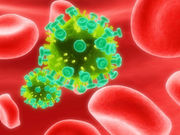ID of missed opportunities can provide insight to improve existing strategies, researchers say
MONDAY, March 13, 2017 (HealthDay News) — A small proportion of HIV-infected women continue to transmit the virus to their neonates despite access to high-quality care, according to research published in the April issue of Obstetrics & Gynecology.
Gwendolyn B. Scott, M.D., from the University of Miami Miller School of Medicine, and colleagues examined data relating to HIV-infected children born from 2002 to 2009 to HIV-infected women. The authors describe the characteristics of the HIV-infected infants and their mothers, as well as mother’s clinical management.
The researchers identified 12 cases of mother-to-child HIV transmission among 1,857 liveborn neonates (prevalence, 0.65 per 100 live births to HIV-infected women). Transmission was in utero for four neonates, peripartum for three neonates, and unable to be determined for five neonates. None of the infants were breastfed. Near delivery, seven of the women had plasma viral loads >400 copies/mL. During pregnancy, six women had less than 11 weeks of antiretroviral therapy; three of these women had premature deliveries. One woman was diagnosed with HIV postpartum and received no antiretroviral therapy during pregnancy. Poor-to-moderate adherence to antiretroviral therapy was reported for six mothers. Preterm delivery occurred in four of five mothers with viral loads >1,000 copies/mL. Five women were delivered by cesarean, including four non-elective cesarean deliveries.
“This case series provides insight into factors contributing to HIV perinatal transmission and can inform the development of new strategies for prevention of mother-to-child transmission of HIV,” the authors write.
Copyright © 2017 HealthDay. All rights reserved.








